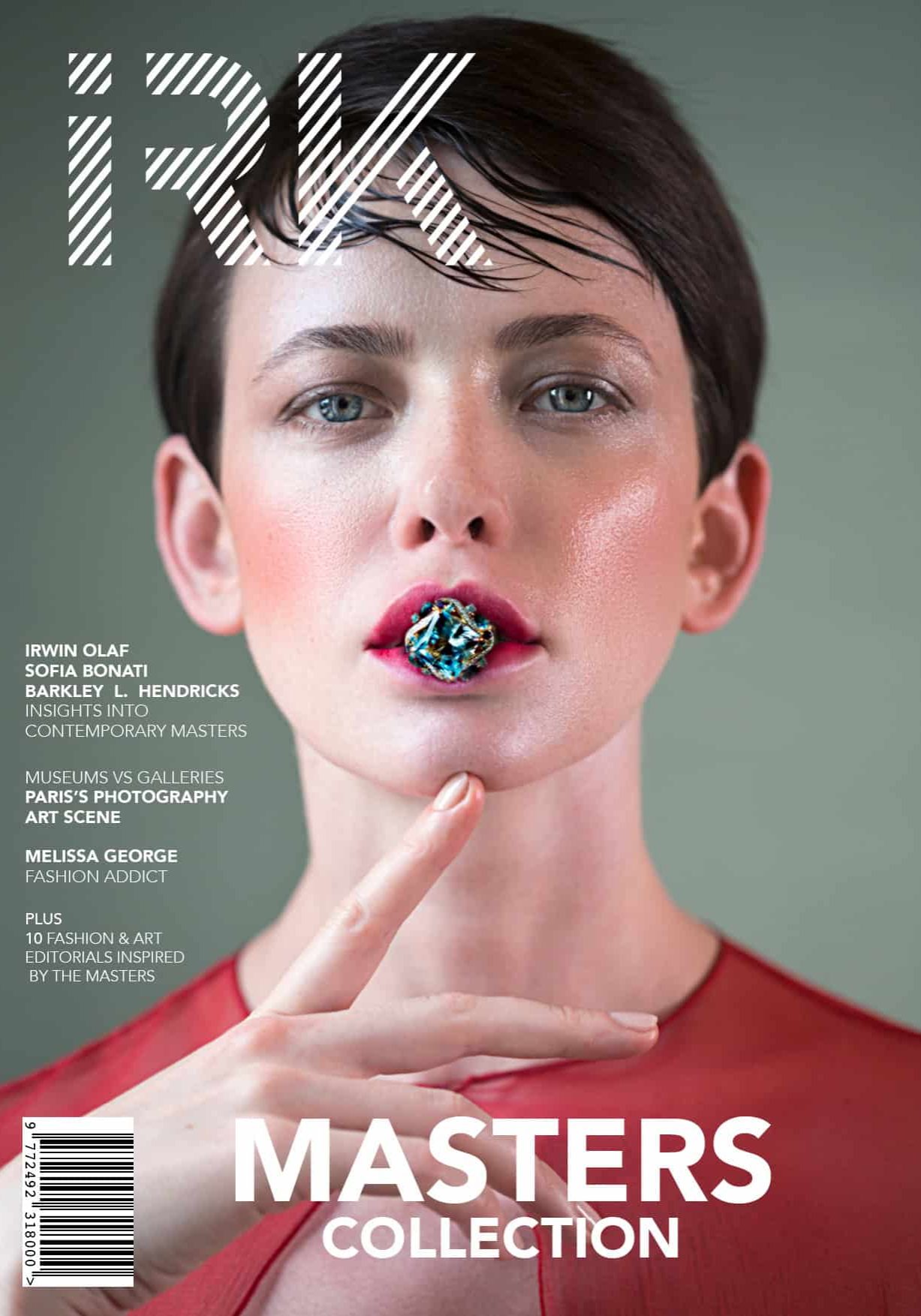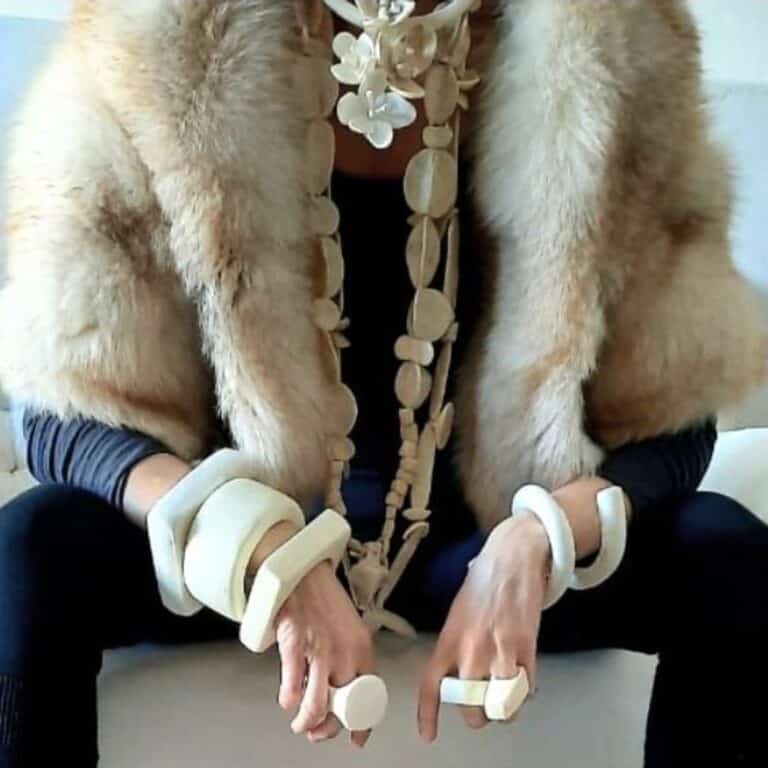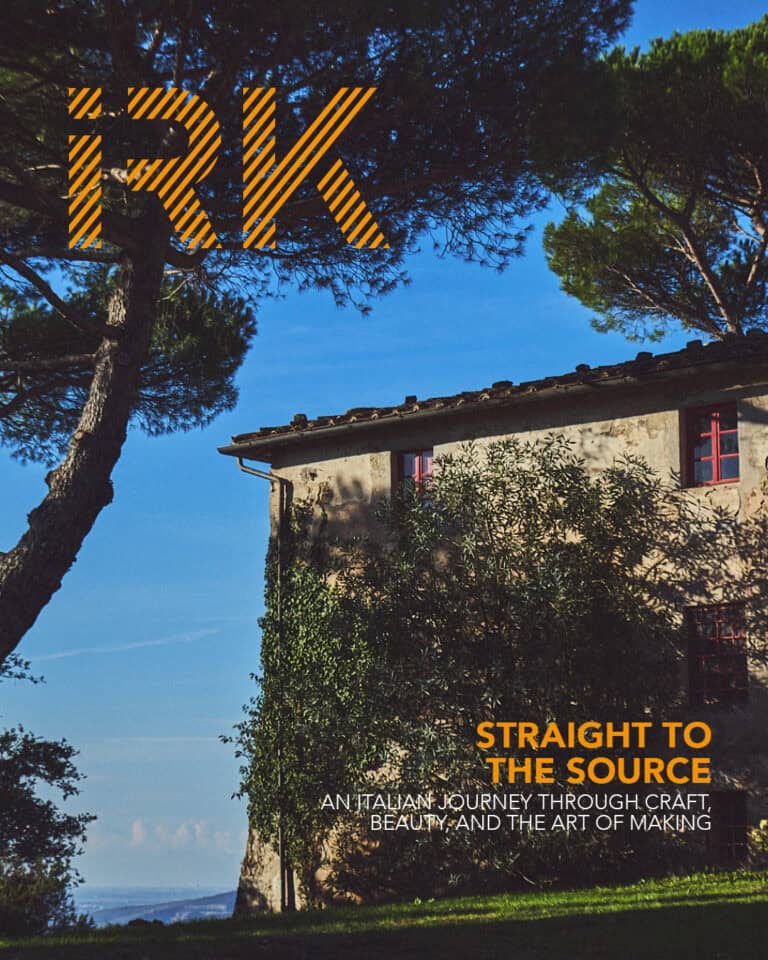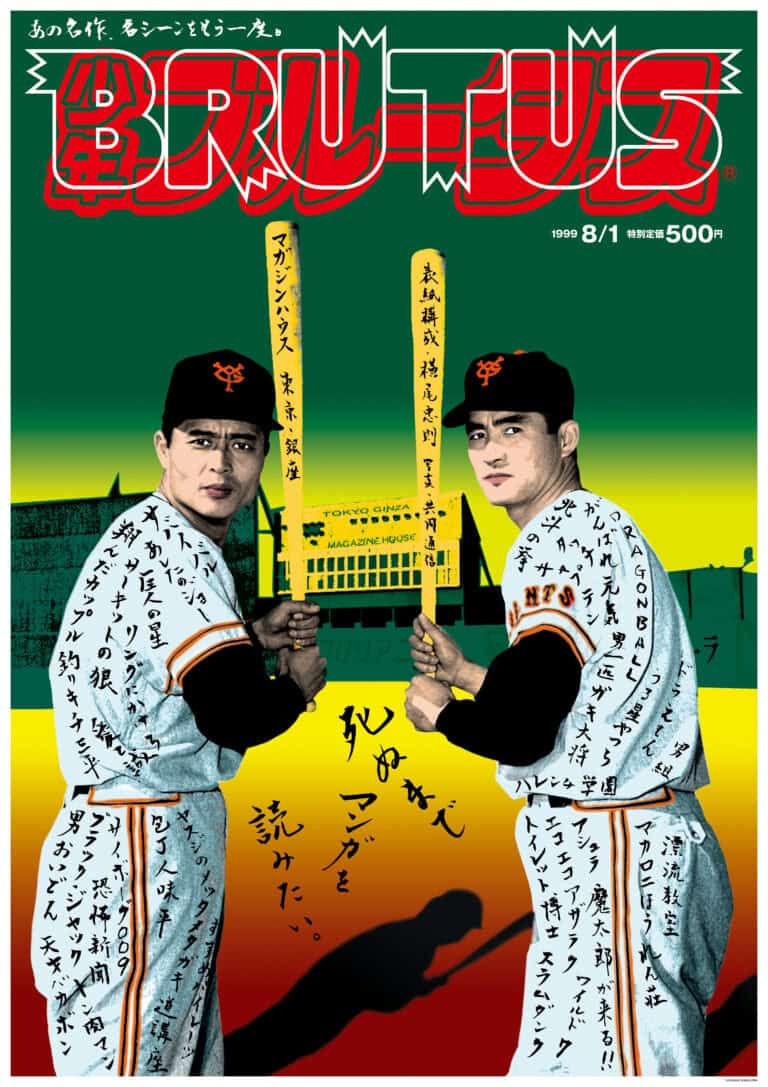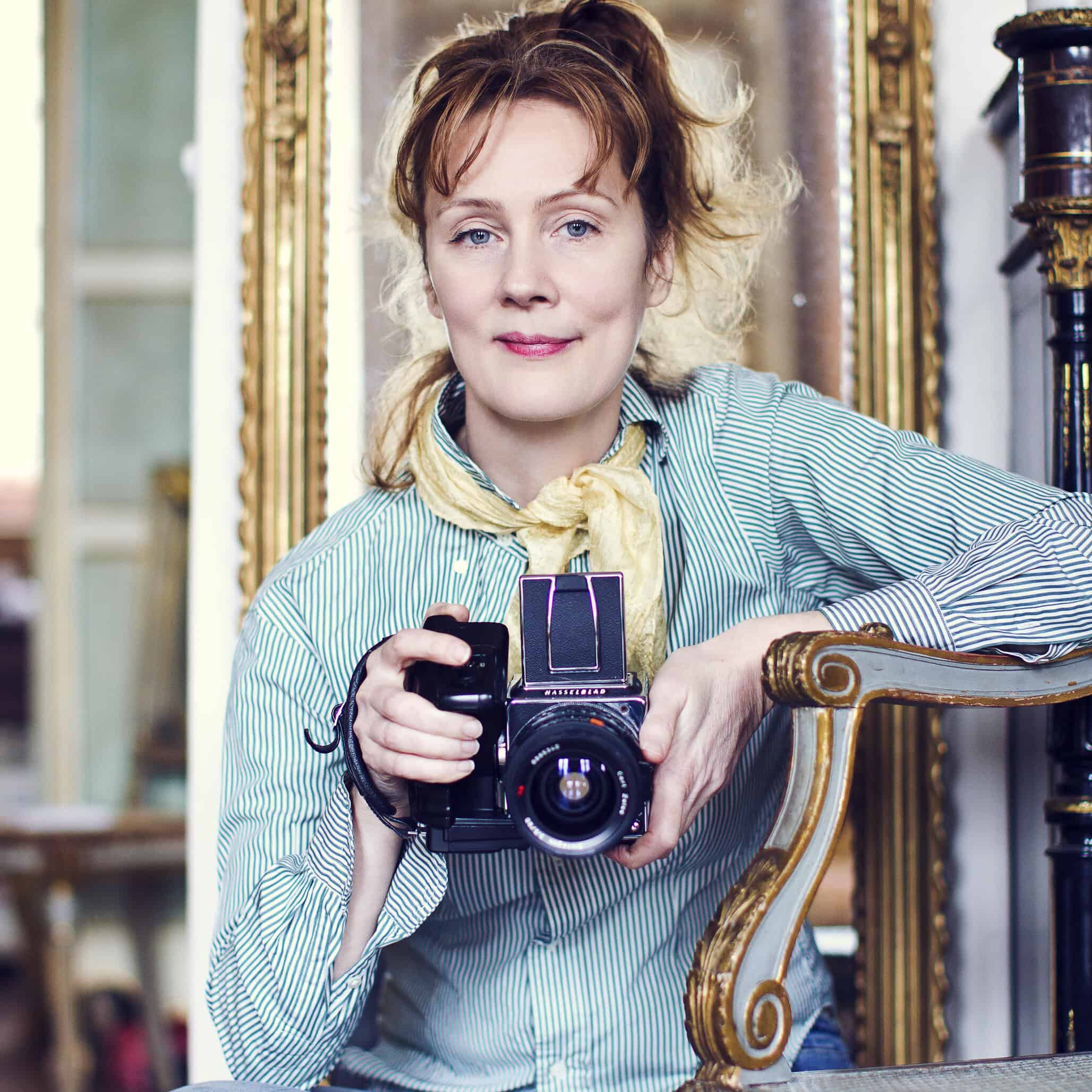
IRIS BROSCH EXCLUSIVE INTERVIEW & FASHION FILM!!!
IRK Magazine

Iris Brosch is one of the greatest photographers of our time and with love in her heart and not anger she champions feminism for all humanity showing feminine, charismatic and strong women in her photography. For her, women are heroines. The soul and the spirit of women are the focal point of her photographs.
Iris photographs fashion, nude and art photography and creates artistic videos and performances. Her art photography and films have been exhibited at the Venice Biennale, Canne film festival, World Expo in Milan, Goethe Institute in Washington, Palais de Tokyo in Paris… Iris’s fashion photographs have graced top magazines including Vogue, Elle, Harper’s Bazaar and Marie Claire. She has photographed numerous celebrities such as Claudia Schiffer, Sophie Dahl, Benedict Cumberbatch, and Heidi Klum. Some of her clients are YSL, Hugo Boss, Pantene, Tommy Hilfiger, Escada, Jaguar, and Lancel.
Iris graces our new issue “LOCOMOTION” with her incredible shoot “Metro Boulot Dodo”. It was shot at several metro stations in Paris with two amazing twins. Getting to know Iris and watching her shoot has been one of the highlights of being the co-editor-in-chief of IRK Magazine. Her generosity with sharing her knowledge and talent have been an amazing opportunity for our magazine and this interview with her is a gift to you our readers. Enjoy!
MIA: How did you get started as a photographer and what was your big break?
IRIS: I am a completely autodidact. I wanted to go to art school in Germany but they refused me. I had presented a portfolio with traditional drawings, paintings and sculpture but the school thought it was too traditional and they told me in a letter that I should learn something manual. I tour the letter apart and went to Paris which was the best art school I could give to my soul. I came from post war Germany where everything was destroyed so Paris felt like being in heaven.
Maybe I should have been demoralized by not being accepted at university and being told I was not good enough but I didnt and instead dove into photography on my own. I started to do a lot of tests with actors and models. I photographed a lot of people and I made some money too. It was a time you could still make money shooting headshots and model tests. Not a lot but enough to survive. By doing this I could earn money and I was able to educate myself by taking photos with a lot of different people.
MIA: How did you get into the fashion and modeling world in Paris?
IRIS: As I was lucky to be tall and blond I was scouted to be a model. That was how I got in touch with the fashion industry. However, I wasn’t a model for long because I never understood their way of thinking. I was told to be beautiful but I was not allowed to talk. I even felt that I was not allowed to be smart. They gave me advice on how to dress and I thought that I already had a great style. Plus I thought I was going to make a lot of money flying on around the world but when you start you don’t make much money at all. One of my last modeling jobs was for Jeanloup Sieff at French Vogue as Ophelia.
I became a photographer pretty quickly there after. I photographed none stop and I learned a lot of technical knowledge on my own. My photographer friends told me to read a book so I did and I learned. I probably learned the most by making mistakes. For example, I heated developer and I shook the developing reel tank so the grain exploded and it looked like an impressionist painting. It was not what one was supposed to do but it was great.
Do you know what is great, when you have no teacher, you have no limits!
MIA: So did you create a darkroom in your apartment?
IRIS: Yes in my kitchen and I had a great apartment and I rented out a room in it. All my roommates were complaining a little but it was my apartment so they could go or stay. I was in my darkroom a lot. Daytime photography and nighttime darkroom, daytime photography and night time darkroom and over and over again.
I also made my own paper using liquid light which is an emulation that one puts on paper. I made my own silver emulation and I created my own paper on different supports. I miss these moments where I spend my time in the darkroom and created things and developed pictures.
MIA: I see nothing has changed. You work as hard as ever.
IRIS: Yes you are right! I should change something. I am 52 and I should relax a little but I don’t know how. I think whatever you do in life if you are passionate about it and you work you will succeed. On one level or another.
Just a lot of work and passion mixed.
MIA: Do you think there are any icons in photography who have influenced you?
IRIS : Not so much in photography. It is nearly too young a medium. I am very influenced by paintings. I like the Italian Renaissance, especially. I like the beauty and the smartness of it. These were the first paintings which showed the body completely naked. They were so beautiful that even the church could not say something against it. I like the powerful messages in these paintings.
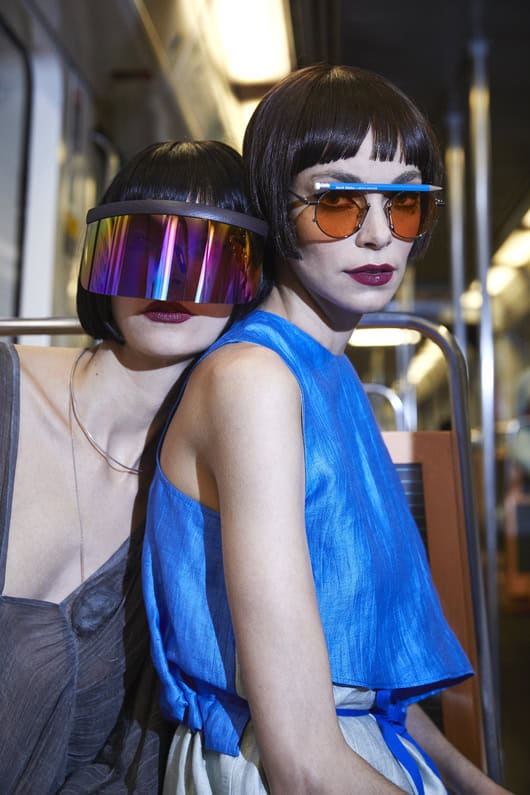
MIA: My favourite shoot in the LOCOMOTION issue is the “Metro, Boulot, Dodo” shoot, your shoot. It is just amazing! We know that it is almost impossible to shoot in the Paris Metro. How did you make it happen and can you tell us about the shoot?
IRIS: That it is a good thing about being a woman. Nobody takes you seriously! In the Metro nobody thinks that you are a professional. They think you are just a decorative woman taking some pictures. So that was good.
We had a short time of a maximum of 10 minutes in each station. In every station we had the pleasure that security came and said we could not shoot in the metro. Of course I expected that to happen so we moved on. We shot in 7 stations and 7 people told us to stop.
Security and police are usually pretty nice when they see models. Especially in France where the men appreciate beautiful woman. The passengers even defended us when security tried to stop us.
In the end, I have to say, that the RATP was pretty lovely. They were really cool!
MIA: How was it to work with the twins Lauriane and Gaelle?
IRIS: A real pleasure. It was the middle of winter and freezing cold and you asked for a transportation theme. In my mind I had the idea just to stay inside and to work with projection. Relaxed, warm, simple! However, for the projection I needed a little more body and less clothing to have a white surface. So this would have included a little more skin. So the girls said we would prefer to do something outside. They were the ones who decided to go outside. They were real entrepreneurs.They gave me the idea and normally it is too tough for a normal model to go outside or even in the subway. They were so supportive. There was no moment they showed that they were cold. They were so powerful..They had strong willpower.
It was wonderful to work with girls who understood the importance of spirit and energy. If not I could not have done the shoot.
I liked that they were both french. The whole idea was to make it a little french. The idea of french freedom. They were able to speak to the passengers and to the RATP people. We were able to shoot everything in the Metro. There was an unspoken understanding between them and me. The were jumping and they were just happy. French Style!!!
What I also loved about them is that they had strong body language between them. If you use two models it is difficult to get a certain closeness. Their sisterhood was quite amazing. I liked this because I am a strong feminist. If you normally put two women together it is not always easy. There is too much competition as to who is more beautiful. The twin sisters just had it naturally. They liked being together. There was no competition. I hope in the future I will have the pleasure to work with them again.
You should try to do something with them, too.
MIA: Oh. For sure. We already have two shoots planned that we want to do with them.
IRIS: Yes. They are just amazing. Amazing french models. They are more than that. They are muses.
MIA: Was it the first time you shot twins?
IRIS:Yes. It was the first time. I never thought about it. Kim, the hairdresser told me that they would be nice. When I saw them the first time I liked them so much. I really enjoyed taking them instead of calling a new casting and always having the same kind of girls. They made the shoot possible. They are french, elegant, graceful and nothing bad came out of their mouths.
MIA:Yes and they were dressed in spring summer fashion. I was also there and it was really cold.
IRIS: Yes, I remember you were there. You know I am German so I always have this kind of German backup. So I thought if I can only do three pictures outside I will mix it with three photos inside. I had no idea what I was going into and I even didn’t know if it was possible to do it.
MIA: Your photographs always have a distinct atmosphere and style. We would love to know how your creative process is in general if this is not your artist secret.
IRIS: No it is not my artist secret. My process is to make everybody feel quite comfortable and relaxed. The first thing I am thinking of is, if the models are comfortable and relaxed. If yes, you can create something stunning and then they have this softness, too.
I think you can really see this softness in the pictures which is a strength at the same time. I know the subway is not like a painting but my pictures are often referred to as paintings. It is the softness which makes it look like a painting or something artistic.
I can photograph simple catalogues also. I like to do simple catalogues in front of a white background. I don’t want people to think everything always has to be artistic. I like to do commercial work too.
MIA: Do you do a lot of research or create mood boards?
No. I know it is a new thing and everybody is making mood boards. I am not of this generation. I am from a generation where we didn’t have computers. No I don’t make mood boards.
Everybody is asking for mood boards. I always think it is strange to search something on the internet and to look what other people have done and then put it together. It is like your never really putting together what you are doing. Secondly, I like to create myself more.
I know many people work like this. They see something and they copy it. This is not my school. I like to see what the stylist, the model, the location brings in. These are my moods.
The energy of the people is my mood board. Whatever the people bring in I will bring it to the image.
MIA: So you allow your team to bring in their creativity?
Yes! And then I bring it in my direction. It is like I am the hole in the needle and all the energy needs to go in one direction and it is my work to direct that energy.
There is a lot of energy from everywhere so you have to bring it in one direction. You take everything you want to have. These are my moods. The energy of the team is my mood board.
MIA: What also interests us is that you worked for amazing magazines such as Vogue and Elle and clients including YSL, Hugo Boss etc. Why are you still enthusiastic about shooting for independent magazines like IRK?
IRIS: The great thing about independent magazines is that one can do crazy things like going into a subway without a permit. When I shoot for more established magazines that would be impossible.
For them you need to be sure. At the end of the day you need to have the pictures. For Vogue I would not have decided to go to the Subway. For independent magazines everybody works for free so if something goes wrong you can come back the next day.
For established magazines there is money involved and it is also impossible to do it for commercial clients. If money is involved you have to deliver. You have more responsibility. You can not say the model did not like the metro or the RATP People were really unhappy and stopped the shoot.
For an independent magazine you are completely free and the team is completely free, too. For IRK I could have said we are re-shooting tomorrow and I know you personally so it was easier.
Everybody was free and it was not too much pressure. The stylist for example had another idea and then we changed it at the last day. We could do that because we are independent. There is this freedom of creation. You just gave one word transportation but there was nothing else we had to do. We did not have to use any special clothes or any advertisers. The make up artist and the hair stylist were completely free too. We could do whatever we wanted which was quite nice.
And it was quite nice to work with IRK, because there were no limits. You never said don’t do this or that.
MIA: You are a known feminist. How does that reflect in your work?
IRIS: I hope I give power and beauty to the image of women. Thats my message. This is what I think is really important. How we create images especially when women are involved, how they should look like, and how they should feel. I think images are very powerful! Images influence a new generation of young ladies and young men, too. We create certain images and especially in fashion we define the ideals of a new generation of young people. So I always think it is really important how we treat a woman’s image which is often abused and used by a male system where she is shown as young sexy and stupid lady and there for reproduction as part of the capitalistic system.
So I prefer to create something which is more real. I also like to work with older ladies or rounder ladies and not always with the stereotype model of 19 years.
I like great images of women. And of course beautiful and also not beautiful. Whatever empowers women interests me.
MIA: Yes, that is wonderful yes.
IRIS: I think men are not happy, too with the world fashion creates. They are stuck having to go out with 18 year old models. These 50-60 year old men think “oh we need a model“ and then they have a baby next to them. They don’t even know how to communicate with each other. It creates a complete disharmony in reality.
Everybody is following the trends. It would be good to make a series with older ladies and younger men. I think Prada did something like this which was quite beautiful. Change the cliches about how women should be and how men should be. I think there is a lot of work to do. I think one of the biggest prices we pay is that we created wrong images. We need to create something new.
MIA: I love this idea for the future issue. Reversing the roles of older women with young men can be your vision of the future.
IRIS: It is constantly the other way around and when you reverse it one can influence new ways of thinking. We always accept it in one way because we have been bombarded by these images for so long . All the magazines show the same images.
MIA: Last but not least. We would love to know what your next projects are?
IRIS: I am now working on a big performance on the 100 years of suffragettes in America for a show November 2017. 100 years ago there was a women’s movement called “suffragettes“. They fought for women’s right to vote in America. It was not a long time ago but we forget. 100 years of voting in America is nothing. I think in France women can only vote for the last 60s. In Switzerland it was just since 1971.
We are the first generation of women being free. We can vote but it has not been a long time. It is crazy when you see the numbers of Arabic countries who just got the right now. Wikipedia included the Vatican in the list where we still can’t vote. In the church there is no right for women to vote. When you see these number you can easily understand where we are standing today. I am preparing this performance where women 100 years ago wanted to do a performance but they were put in prison next to Washington. I will create a big exhibition and performance in this prison in memory of all these women who were fighting for our rights.
The problem is that women are not together and supporting each other. We have to be together and get rid of our fear which is pushed into ourselves since centuries. Men have had mens clubs for centuries. Places where they could meet and discuss. They were always like brothers but women have not had that. We were always separated at home in the kitchen.
I always try to create confidence between women which makes us stronger. It is really important to create a real link between us.
Sometimes I don’t like certain things in fashion such as when women fight for a bag. They think it is funny. I don’t like to fight. I don’t like to create these kind of images. I think we fight too much already. Whenever another women comes in we are a little jealous. I try to get rid of that fear.
MIA: Beautiful!
IRIS: This is also with images. There are many images that are anti-women but they are covered in great Gucci or Prada. The message that women should come together is important. It is important to create female energy to create something strong and powerful.
For the last 10 years I have been working on these performances. I have a special website where I just show work that has a strong feminist feeling. Starting from the burning of witches which was in fact powerful women who worked with herbs. At that time they were called witches. There was this book “Malleus Maleficarum” from the church that made every woman who was powerful into a witch. I worked on all these subjects which give power to women.
I think there was a kind of a holocaust that happened to women and I guess society never talked about it and I think it was accepted by the church. And i think it is important to talk about it and express it in art to fully heal!
More info:
FASHION
PERFORMANCE ART
Share this post

